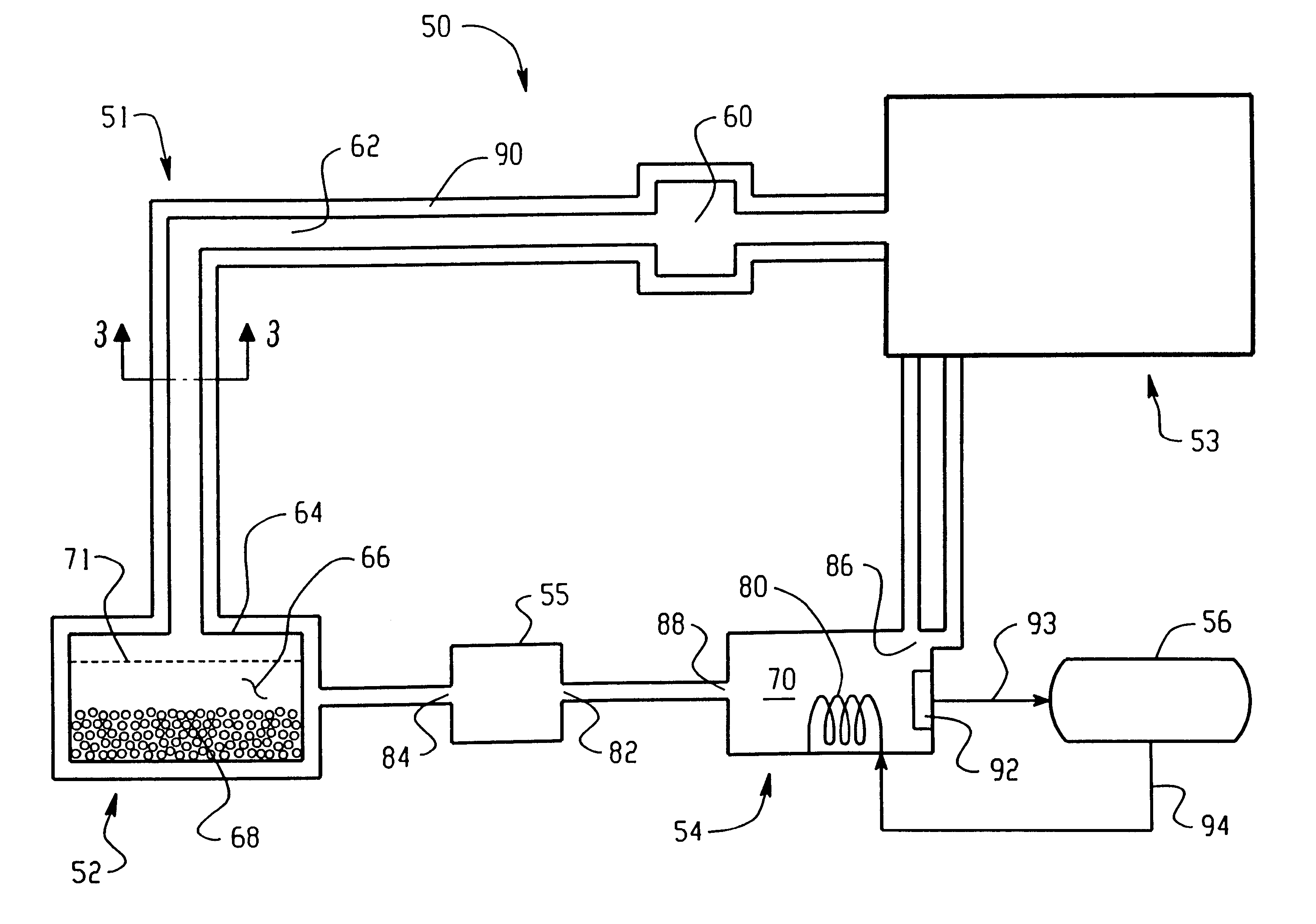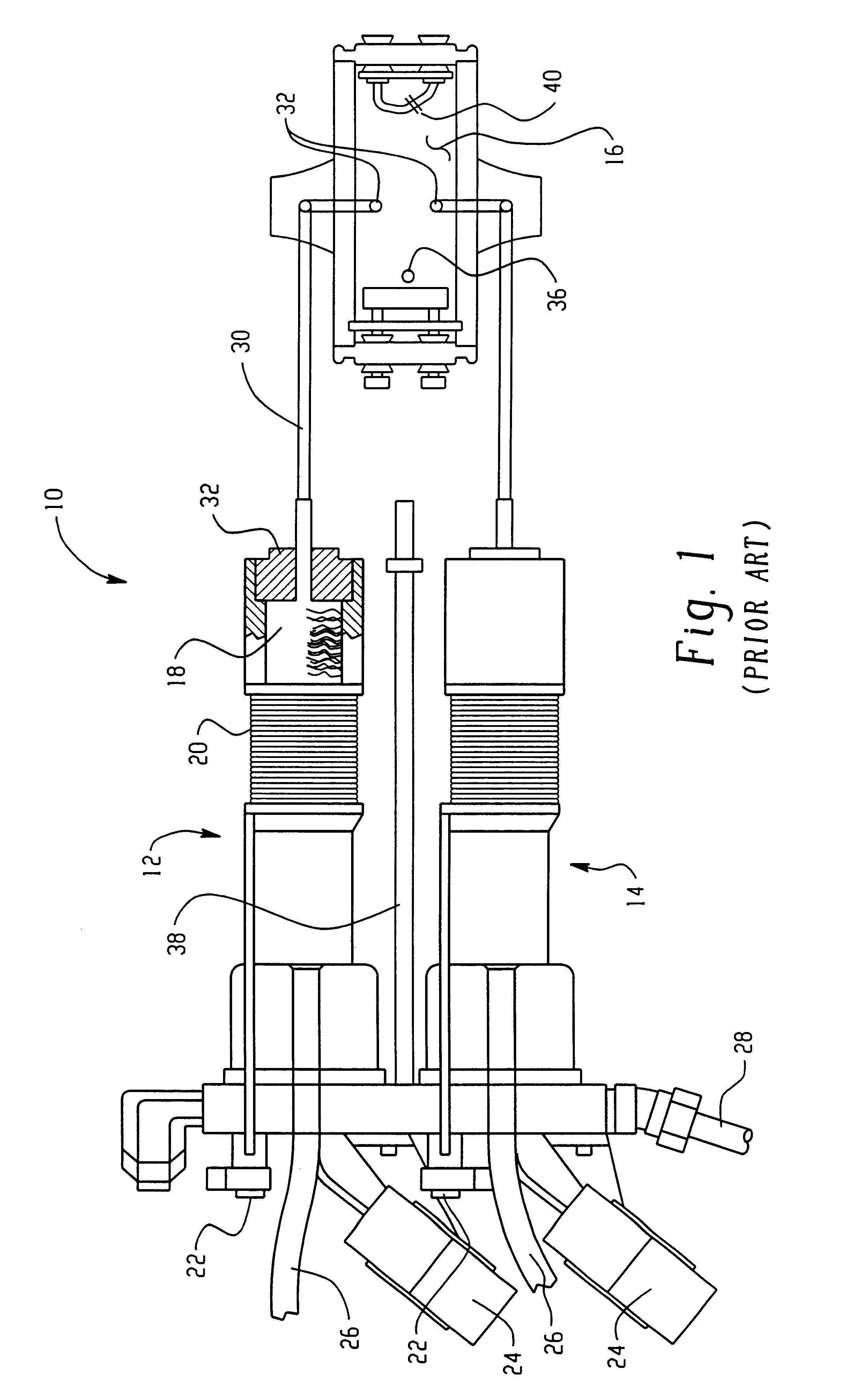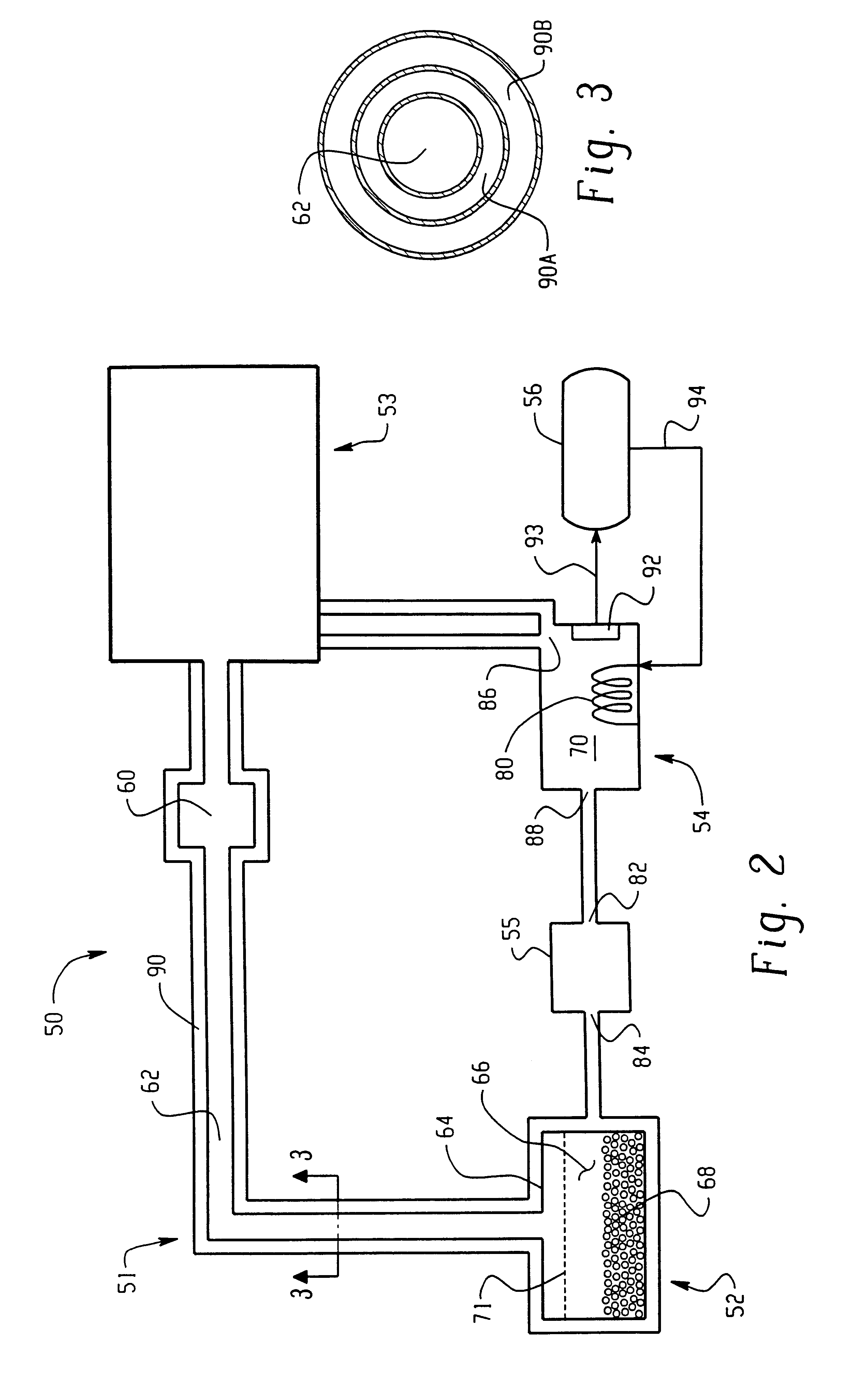Decaborane ion source
- Summary
- Abstract
- Description
- Claims
- Application Information
AI Technical Summary
Benefits of technology
Problems solved by technology
Method used
Image
Examples
Embodiment Construction
[0020]Referring now to FIGS. 2-4 of the drawings, and initially to FIG. 2, an ion source 50 comprising a vaporizer 51 and an ionizer 53 are shown, constructed according to the present invention. The vaporizer 51 comprises a non-reactive, thermally conductive sublimator or crucible 52, a heating medium reservoir 54, a heating medium pump 55, a temperature controller 56, and a mass flow controller 60. Ionizer 53 is shown in more detail in FIG. 3. The crucible 52 is located remotely from the ionizer 53 and connected thereto by a feed tube 62, constructed of quartz or stainless steel. In the disclosed embodiment, the feed tube 62 is surrounded by an outer single-chamber annular sheath 90 along substantially the entire length thereof.
[0021]The crucible 52 provides a container 64 enclosing a cavity 66 for containing a source material 68. The container is preferably made of a suitable non-reactive (inert) material such as stainless steel, graphite, quartz or boron nitride and which is capa...
PUM
 Login to View More
Login to View More Abstract
Description
Claims
Application Information
 Login to View More
Login to View More - R&D
- Intellectual Property
- Life Sciences
- Materials
- Tech Scout
- Unparalleled Data Quality
- Higher Quality Content
- 60% Fewer Hallucinations
Browse by: Latest US Patents, China's latest patents, Technical Efficacy Thesaurus, Application Domain, Technology Topic, Popular Technical Reports.
© 2025 PatSnap. All rights reserved.Legal|Privacy policy|Modern Slavery Act Transparency Statement|Sitemap|About US| Contact US: help@patsnap.com



